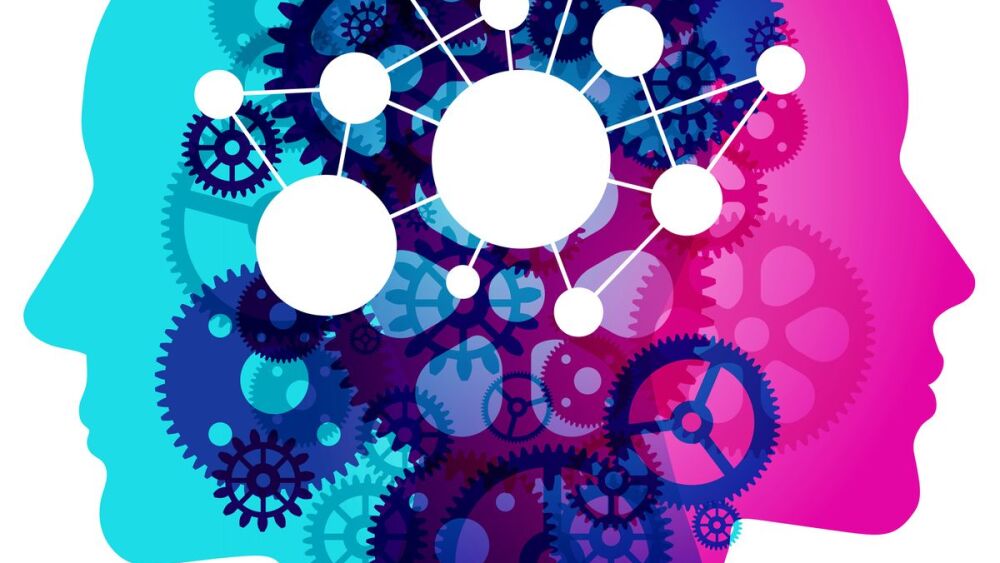Fill out the form on this page todownload a mindfulness infographic to help you assess your mental state.
Walk through the start of a call with me.
You’re sitting in your station, balancing a checkbook or checking on how much PTO you have, when the call comes in.
I don’t care how many years you’ve been doing this, the sound makes your heart pump a little faster and your senses kick up a notch or six. It’s your sympathetic nervous system preparing you to do what you were born to do; fight or fly. The next hour or so of your life is going to be on a different level than it would be if you were still counting time off, so it’s important to be able to keep yourself focused and functioning, but it’s also important to be able to address the impact that 60 minutes will have on you.
Conscious analysis of yourself as you are in the process of providing for others takes practice. It won’t come easily. You will not be an expert after reading an article. It will feel weird to do it after being raised in a culture that says your well-being doesn’t belong in a patient assessment.
To walk into a room with a person who is suffering and expect to walk out of that room unscathed is an unrealistic expectation. Read it again. Say it out loud. Once more for the people in the back.
Your well-being belongs exactly between patient contact and patient treatment, and then everywhere afterward.
As human beings, we relate to the world around us empathetically and sympathetically. You don’t have to have a stage 4 decubitus ulcer in order to understand pain. You don’t have to lose a child to understand a feeling of loss. These are emotions and feelings we share with our fellow humans and we have to acknowledge that we are going to walk away from seeing someone suffer and have a natural response to it.
Acknowledging feelings
Robert Plutchik, a psychologist and creator of the emotion wheel based on his theory of evolutionary emotions, said that we have a core set of emotions that delineate out into interpretation or – as we call them – feelings. Emotions are static; feelings are dynamic. We react to an outside stimulus by accessing these core emotions and dictating how we feel by how far from the middle we are. For Plutchik, it was important to read emotion from the core out, but for service providers, we should read it from the outside in to understand how to resolve the feeling the emotion has caused.
For example: I walk in to see a patient with dementia who I was called to for altered mental status. The staff directs me to a room with a woman screaming in bed. They called because she doesn’t talk, but now she’s screaming, and they can’t figure out why. Walking in the room, the smell of rotten flesh hits me in the face and my assessment leads me to the stage 4 decubitus ulcer on her back – a totally preventable problem. Her paperwork says she’s bed-bound so this situation has transitioned from altered mental status to neglect.
My feelings on this patient’s condition will fluctuate; anger, sadness, disgust. Then I will experience the combination of those feelings; contempt, remorse, disapproval. If I am going to serve my patient to the best of my abilities and still care for myself, I have to understand what the core emotion of these feelings is: rage, loathing, grief.
The key to this process is not only acknowledging the emotion and making it more accessible, but in making a conscious effort not to avoid the feeling. That is where we find disorder. As we avoid feelings, as we refuse to acknowledge emotion, the feeling amplifies until it spills out. PTSD/PTSI is a good way to look at this manifestation.
Avoiding the fear, the anger, the pain of a call amplifies those reactions until we are hypervigilant, we have nightmares, we look to self-medicate or self-harm to get away from these emotions swelling and expanding out past our capacity. We quantifiably damage our brains until we are locked into a new destructive pattern. The sympathetic nervous system response demands we act and it will continue to stay stimulated until we do something about it.
As a caveman facing a saber-toothed tiger, you would run. As a provider facing human pain or suffering, you can’t. It’s the same stress response! So you must come back to it. Acknowledgment and then conscious practice on how to resolve the heightened state is like turning down the volume on a blasting stereo. Will all the noise stop? No. But you won’t be overpowered, and you can hear yourself think again.
Checking on your partner’s wellbeing
Now that you’ve acknowledged the feelings you’re experiencing, found the root, it’s time to see just how far from your functional ability they’ve taken you. You’re part of a team, you and your partner function together, but there’s no need to stand on the side of the patient’s bed and scream out, “I’m so scared!” You still have a job to do.
A partner becomes your family, they end up knowing what you’re thinking with a look from across the room. Perform a status check with each other without alerting the room you’re in need of a break. It’s called the “You Good?” check-in. I’m from New Jersey; “You Good” means everything from “do you have enough money?” to “you don’t need to apologize.” Here, it’s a means of asking permission to intervene in your natural reaction to a situation. Here are the rules:
- Both good? You’ve both performed your self-assessment and you don’t need to intervene in the feelings at the moment.
- One not good? The partner identifying as good does another quick self-assessment to determine if they can truly function while the “not good” partner goes and takes a productive break.
- Both not good? Both partners take a minute for their own productive break.
Intervention: Taking a productive break
What’s a productive break?
It’s your intervention. On the inside, this is the second step in your mindfulness practice. When you can take a moment and step away, acknowledging that your natural reaction is happening, you make the feelings smaller and more accessible. You have not taken away its power, but you have made it something safe to come back to. Internally acknowledging, “this call is making me angry” in the moment and working on taking down that sympathetic response, that emotional off-gassing, means that when the patient is turned over and you’re resetting for the next one, coming back to that response is something you’ve already conquered and you can start to recover.
On the outside, it’s doing something to progress the call without having to be actively involved in the stimulus. Go get the suction unit from the truck. Go get the paperwork. Step out of the room and count out your dose of Aspirin. While you do that, practice your breathing or perform a body scan. Do something mindful to slow the response and ground yourself.
A productive break can happen anywhere on a scene, it takes no extra equipment except for what you need to move the call along.
“This sounds lovely, but what if the patient is critical and we need all hands on-deck?” This happens all the time. You don’t get called for people who aren’t sick … most of the time. The beauty of mindful practice, of grounding, is that it can happen anywhere. When I have both a sick patient and a need to return to function, I use the task I’m doing as a focus point to perform my grounding breathing. I perform a body scan and physically remove my shoulders from my ears. I breathe in with purpose and breathe out until I can feel my pulse slow. By the end of that 60 seconds, I have an IV established and I’m not screaming in my head.
The check-in happens three times:
- After your general impression
- When transferring the patient to the ambulance
- Right before initiating transport
I work in a two-tier system, so the possibility to not have a paramedic on a call is about 50/50. If you’re an EMT and need the support of your partner, get someone from the rest of the response team to drive your truck: a firefighter, a police officer. If they are not available, add another productive break before you move.
If you are on a dual paramedic team, hand your keys over to your BLS and have your partner ride in with you. This gives you time to re-center, regroup and re-ground while still caring for your patient.
Remember, performing self-care while caring for others is not at all what you’ve been taught to do. “We are the heroes, so we don’t need to take a breath when someone else’s life is on the line.” “The adrenaline surging through our system shouldn’t affect us.” “We aren’t going to be taken out by something as silly as feelings.” Except you will, eventually. Everyone’s bucket fills up, so everyone’s bucket has the potential to overflow.
This article was originally posted July 27, 2020. It has been updated.
Fill out the form on this page to download a mindfulness infographic and learn how to assess your mental state.




